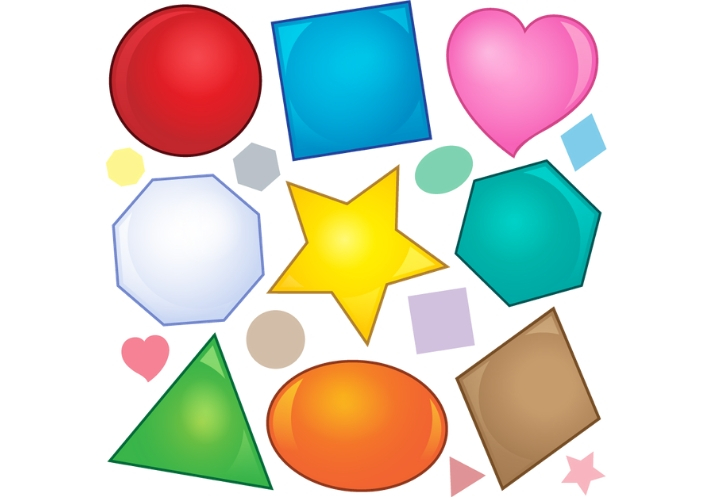
Circles are completely round and made up of a single curved line.Observe the properties of a circle to identify it as a two-dimensional shape.

A circle consists of various parts like the radius, diameter, circumference, and so on. Some real-life examples of the circle are coins, wheels, and pizzas. Circle:Ī circle is a closed 2 Dimensional shape made up of a curved line with no corners or edges. Here is a list of 2D shapes examples along with their properties. However, a few of them are commonly seen around us and are discussed below. Let us learn about a few of them along with their properties. There are different types of regular and irregular two dimensional shapes like a circle, triangle, square, rectangle, pentagon, and hexagon. It shows a list of 2d shapes.Ģ-D shapes are flat and can be drawn on a sheet of paper. Observe the following figure which shows the difference between regular and irregular two dimensional shapes. A two dimensional shape (2D shape) is irregular if all the sides are of unequal length and all its angles are of unequal measures.A 2 dimensional shape (2D shape) is said to be regular if all its sides are equal in length and all its interior angles measure the same.Types of 2D Shapes - Regular and Irregular 2D ShapesĪ 2D shape can be classified as regular or irregular based on the length and the interior angles: The figure given below shows a list of 2D shapes that we commonly come across. 2D shapes with at least three straight sides are called polygons and these include triangles, squares, and quadrilaterals. All the 2 dimensional shapes have sides, vertices (corners), and interior angles, except for the circle, which is a curved figure. A circle, square, rectangle, and triangle are some examples of two-dimensional shapes and these shapes can be drawn on paper. 2D Shapes DefinitionĪ polygon is a 2 dimensional shape made up of straight line segments which are connected with each other, thus giving it a closed shape. Some common 3D shapes are cuboids, cones, pyramids, and cylinders. For example, a dice is three-dimensional because it consists of a length, a width, and a height. In comparison to these, a 3D (three-dimensional) shape has three dimensions - length, width, and height. They do not have any thickness and can be measured only by the two dimensions.
#2 dimensional and 3 dimensional shapes pdf
These math worksheets should be practiced regularly and are free to download in PDF formats.In geometry, 2D shapes (2 dimensional shapes) can be defined as plane figures that are completely flat and have only two dimensions - length and width.

It works great in comparing and analyzing the features that are common among the shapes.

Grade 1 and grade 2 kids snip the shape cards, sort them as 2D and 3D, and glue them in their respective columns. These worksheets have visual simulations that help students see things in action.Ģd and 3d shapes worksheets help kids from Kindergarten and Grade 1 keenly observe each geometrical figure, compare them and decide which of these are 2-dimensional and which are 3-dimensional and check the appropriate box. Benefits of 2d and 3d Shapes WorksheetsĢd and 3d shapes worksheets help test their ability in recognizing the flat faces of the 3D figures they see and correlate them with familiar 2D shapes. Kids of grade 4 and grade 5 are tasked not only to identify 2D shapes as the faces of solid shapes but also to count the number of each shape. 2D and 3D shapes worksheets help to explain how 3D shapes are composed of 2D shapes.


 0 kommentar(er)
0 kommentar(er)
